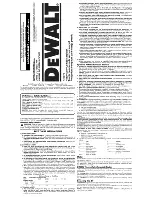
F I N A L D R A F T - C I S C O C O N F I D E N T I A L
3-4
Cisco ONS 15216 EDFA2 Operations Guide
78-16033-01
Chapter 3 Installation
SC/UPC Optical Ports
Step 3
Connect the second patchcord to TERMINAL OUTPUT. Measure and record the total optical power:
a.
DWDM/OADM output
b.
Terminal transmitter output
Step 4
If optical power at the end of the TERMINAL OUTPUT patchcord is less than or equal to +4 dBm,
connect the end to the ONS 15216 EDFA2 input. If the optical power is greater than + 4 dBm, additional
optical attenuation is required to bring optical power below + 4 dBm.
Figure 3-1
ONS 15216 EDFA2 Optical Connections
3.4.3 Optical Amplification Operation Verification Procedure
To verify ONS 15216 EDFA2 optical amplification, use the following procedure:
Step 1
Connect an optical power meter to the MONITOR OUT port.
Step 2
Measure and record the output power. The MONITOR OUT port level is –20 dB less than the signal.
Step 3
Verify that the ONS 15216 EDFA2 input and output power are within the range shown in
Table 3-1
.
For example, if the total input power is between –27 dBm and –5 dBm, expect an output power between
–5 dBm and 17 dBm.
Note
Unless overridden by the user, the gain per channel is by default set to 22 dB by the ONS 15216 EDFA2.
Gain is fixed at 22 dB as long as total input power is less than or equal to –5 dBm. If your input power
is higher than –5 dBm, see the
“Set Gain” section on page 4-5
.
Fiber output
monitor
Fiber
output
Fiber
input
71175
-48V A
R A
POWER
FAIL
LOS
Table 3-1
Gain Range
Gain
Total Input Power (dBm)
Total Output Power (dBm)
(dB)
Min
Max
Min
Max
22
–27
–5
–5
17
















































